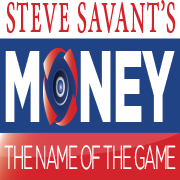 Mesa 2/14/2018 11:00:00 AM
Mesa 2/14/2018 11:00:00 AM
News / Finance
Permanent Life Insurance
Lifetime Economic Exposure Requires a Permanent Solution

Part of your premium pays for insurance coverage and administrative fees, and part goes into a cash value account, which grows tax deferred. The longer you pay your premiums, the larger it has the potential to grow. If you die when the policy is in force, your beneficiary receives the death benefit, or face value of the policy, which includes the balance in your cash value account.
USING YOUR CASH VALUE - There may be times when you can borrow against the cash value, some- thing you can’t do with a traditional term policy. Interest rates on cash value loans are generally lower than the rates available on other loans.
However, the loan you can take is limited to a percentage of the account value. Even more important, any amount you’ve borrowed and haven’t repaid at the time of your death, plus the interest due, is subtracted from the face value and reduces the amount your beneficiaries will receive. Since your primary goal in buying the insurance to begin with is protecting your loved ones, you may want to borrow against that protection only as a last resort.
Whole life insurance is the oldest and most straightforward type of permanent life insurance. You select the face value, which remains fixed for your life. If you want additional coverage, you can add a term rider or buy another policy. The premium is guaranteed not to increase while the policy is in force. You may also be able to choose among payment schedules, so you can select one that best suits your budget. For example, you might pay a premium each year, either in a single payment or installments. You might buy a policy that lets you pay for a lifetime’s worth of coverage within a fixed period, such as 15 years. Or you might choose a policy that will be entirely paid up when you reach a certain age. The company invests your cash value on your behalf, generally in conservative, slow-growth, but low- risk, investments.
Universal life insurance is permanent insurance that’s a little more complicated than whole life coverage—but much easier to adjust as the circumstances of your life change. While the details of a whole life policy, such as the death benefit and the premium, are generally fixed when you buy, both the death benefit and the premiums you pay may be adjusted with a universal life policy.
FLEXING YOUR POLICY
Like a whole life policy, a universal life policy provides a death benefit and an account value. When you make a premium payment, the insurance company deducts an administrative cost, figured as a percentage of the premium, and deposits the rest to your account value. Then each month, the company deducts enough from the account value to cover the costs of insuring you, including administrative fees. The remaining balance earns interest at a rate that reflects what the company is earning on the investments it makes. If the issuing company earns more than it anticipated, it credits more to your account value. But you never accumulate earnings at less than the guaranteed rate.
Contributions from the book Guide to Understanding Life Insurance in this press release are used with permission from Light Bulb Press.
